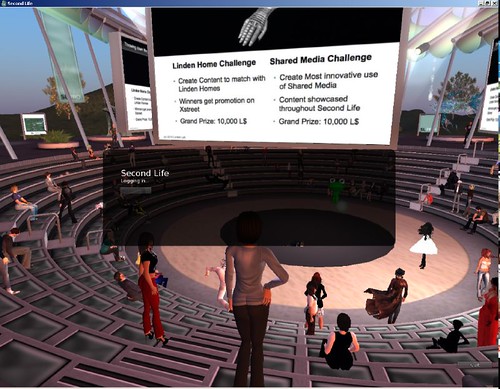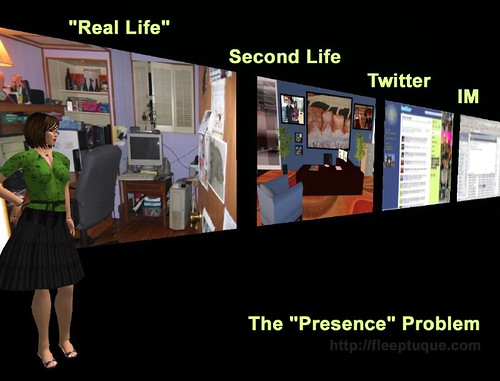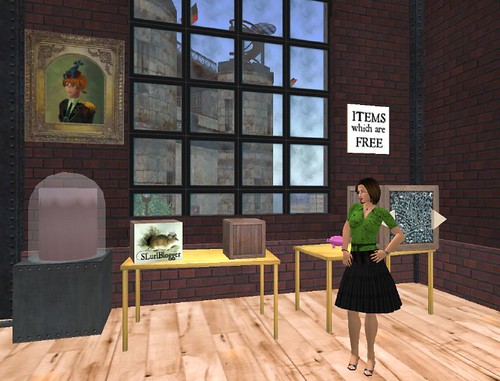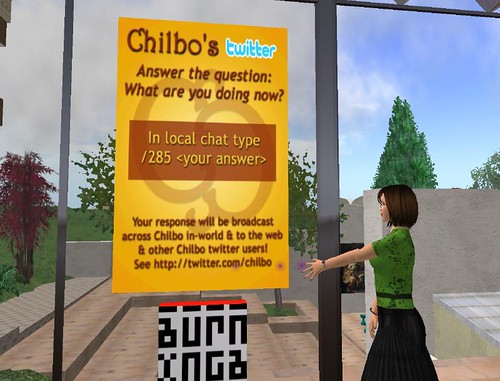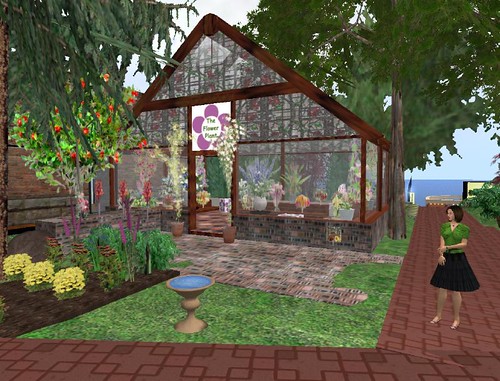
“Are you crazy?” That was pretty much the sentiment when I told friends in April that I’d decided to help try to pull something, anything, together for this year’s Second Life Community Convention. The timing, the workload, the politics – for all sorts of reasons it felt like a terrifying commitment. I’d not attended SLCC in 2009, my grandpa had passed away a few months prior and I didn’t have the heart for it, and my experience as part of the organizing team in Tampa 2008 hadn’t been exactly positive. But when the phone call came…

Stuffing bags and folding tshirts on Thursday…
Image courtsey Sitearm
The hardest part of organizing something in such a short time frame wasn’t the sleepless nights or ignoring the house cleaning (and friends and family) for weeks on end, it was the fear that it would all be for nothing. That no one would show up, that no one would come, or worse that the people who had paid to come would ultimately feel it had been a waste of their time and money. We stressed about the budget, the program, the venue, the logistics, and all the things that every event planner worries about going wrong, and perhaps even moreso given the shortened time line to nail down all the details.

Conversation the night before the convention over drinks.
What’s Wiz Nordberg saying? Image courtesy DirkMcKeenan
But more than the logistics, and venue, and schedules, and updating the website and all that .. stuff that goes into making a convention, we were far more worried about something less tangible. Something invisible that it’s harder to put your finger on, that’s hard to even describe – that amorphous “community spirit” that threads through a diverse group of individual people to weave a sense of belonging together, an identity separate from one’s own that makes you feel a part of something larger.  Was the “community” still out there? Did they still want to come together in person, and especially after such a difficult roller coaster ride of a year for the platform?
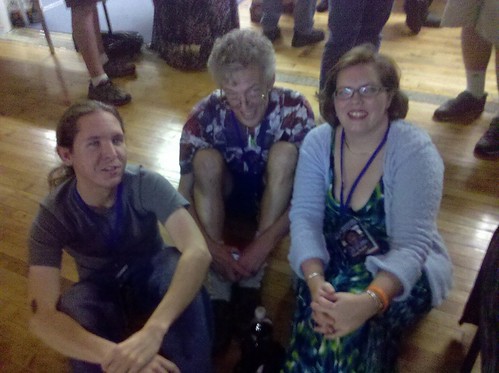
Hanging out with Tomkin Euler, fellow Chilbo resident, and Amulius Lioncourt,
one of the 11th hour in-world builders who did an amazing job.
I can only speak for myself, but I am so thankful that the answer to both questions was “yes” – a resounding, boisterous, defiance in the face of all challenges yes. Yes, the people who discovered something new about themselves and found each other through this platform called Second Life are still out there, and though many could not come due to timing, cost, or circumstance, enough of us made our way to Boston and engaged in the annual ritual of baring our real life avatars for a weekend of fun, laughter, hopefully some learning, and lots of passionate discussion and debate about the future of the metaverse. I was too busy to engage in much of it myself, but watching it unfold was a beautiful thing to see..
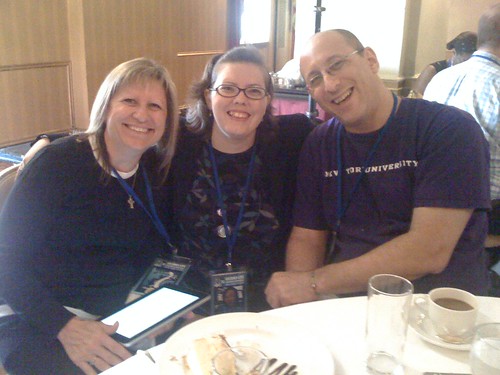
Stopping by to chat with Olivia Hotshot and AJ Brooks at lunch.
Image courtesy OliviaHotshot
The question I heard so many times over the last few months as we planned the convention is why, if the virtual world is so powerful, do people want to come together in person in the first place? The answer isn’t so simple, but it has something to do with the fact that those of us living simultaneously in the metaverse and the physical world are living complicated lives.  Life itself has no guidebook, but virtual life has even less of one, and there is something inordinately powerful about being in the presence of hundreds of other pioneers in this space who know on a deep level some of the challenges you yourself have faced.
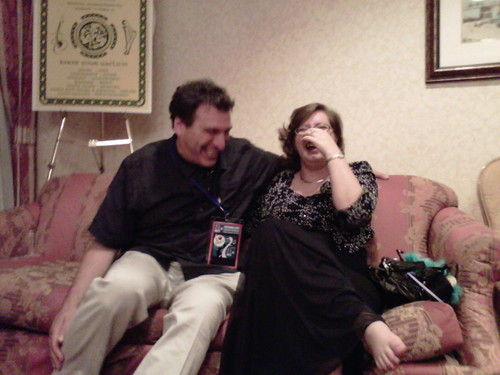
Laughing hysterically with Beyers Sellers..
Image courtesy Imjsthere4fun
Second Life is a platform, a technology, a tool.  But it gave us a glimpse of the future, and in one way or another has forced all of us who have immersed ourselves deeply to ask fundamental questions with a new perspective – Who am I? Who is Fleep? Who do I want to be if I can be anything? What is real?  What is virtual? What do all these technological changes mean for the future – for me, for society? And where is this all going, anyway, this platform called Second Life, and this concept we call the metaverse? Is it stalling? Is the vision we shared breaking apart or are we just hitting some stumbling blocks?

AvaCon board meeting at PF Chang’s on Thursday…
Fleep Tuque, Misty Rhodes, Peter Imari, Rhiannon Chatnoir
My personal goal for SLCC was to provide a space for that conversation to take place. Nothing more, nothing less. All we needed was a place to sleep, a place to eat, and a place to talk. It didn’t have to be fancy or out of the box, indeed there wasn’t time for that, and the end result was a very conventional convention with some very unconventionally wonderful people. I think for this year, that was enough, for us to see each other in the flesh, to know that these deeper questions that drive us to put up with the lag and the deficiencies of the platform are not the result of some madness unique to ourselves, but a madness shared by many to understand what the future holds and hopefully to help shape it.
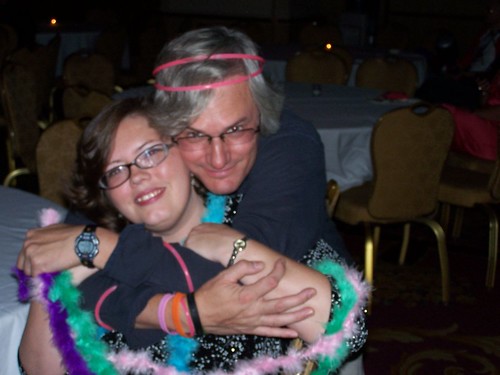
Hugs from Dirk McKeenan at the Avatar Ball.
Image courtesy Debi Latte
And for all those who helped make the conversation possible this year, in world or in Boston, on the web and in Twitter, I hope you feel as I do on the other side of SLCC10:
The community is as strong as ever. Second Life, and the people who make it meaningful, aren’t dead by a long shot.
The vagaries of a particular platform are like the vagaries of the weather, something we must deal with but that doesn’t control our destiny unless we let it.
The future of the metaverse is as exciting today as it was five, ten years ago.
I can’t even think too much of next year right now, I’m too tired. :)  But I hope we can do an even better job facilitating that conversation in 2011. Thank you to everyone who made it possible and I hope you’ll join us next time around.








